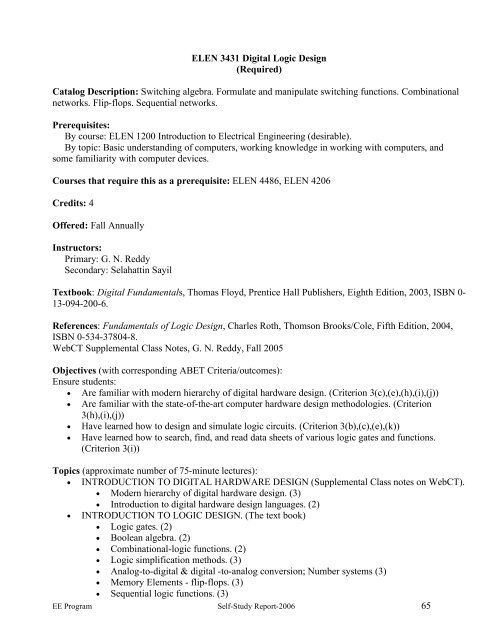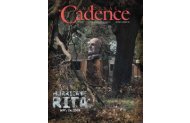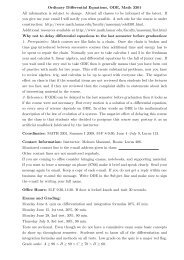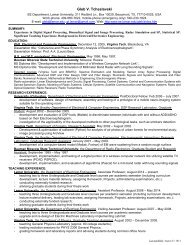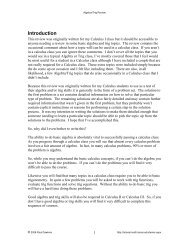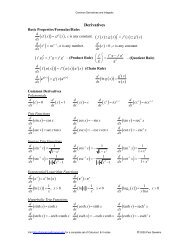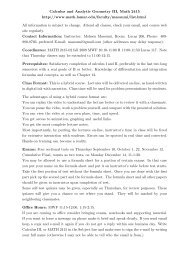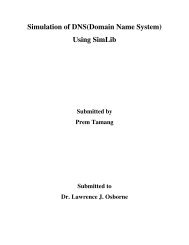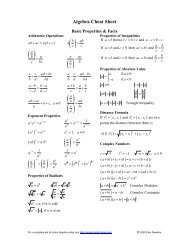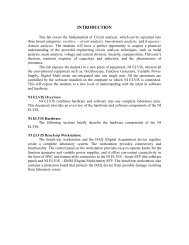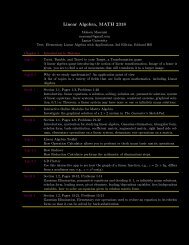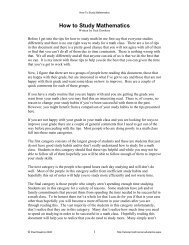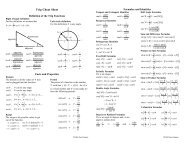program self-study report - Lamar University Electrical Engineering
program self-study report - Lamar University Electrical Engineering
program self-study report - Lamar University Electrical Engineering
You also want an ePaper? Increase the reach of your titles
YUMPU automatically turns print PDFs into web optimized ePapers that Google loves.
ELEN 3431 Digital Logic Design(Required)Catalog Description: Switching algebra. Formulate and manipulate switching functions. Combinationalnetworks. Flip-flops. Sequential networks.Prerequisites:By course: ELEN 1200 Introduction to <strong>Electrical</strong> <strong>Engineering</strong> (desirable).By topic: Basic understanding of computers, working knowledge in working with computers, andsome familiarity with computer devices.Courses that require this as a prerequisite: ELEN 4486, ELEN 4206Credits: 4Offered: Fall AnnuallyInstructors:Primary: G. N. ReddySecondary: Selahattin SayilTextbook: Digital Fundamentals, Thomas Floyd, Prentice Hall Publishers, Eighth Edition, 2003, ISBN 0-13-094-200-6.References: Fundamentals of Logic Design, Charles Roth, Thomson Brooks/Cole, Fifth Edition, 2004,ISBN 0-534-37804-8.WebCT Supplemental Class Notes, G. N. Reddy, Fall 2005Objectives (with corresponding ABET Criteria/outcomes):Ensure students:• Are familiar with modern hierarchy of digital hardware design. (Criterion 3(c),(e),(h),(i),(j))• Are familiar with the state-of-the-art computer hardware design methodologies. (Criterion3(h),(i),(j))• Have learned how to design and simulate logic circuits. (Criterion 3(b),(c),(e),(k))• Have learned how to search, find, and read data sheets of various logic gates and functions.(Criterion 3(i))Topics (approximate number of 75-minute lectures):• INTRODUCTION TO DIGITAL HARDWARE DESIGN (Supplemental Class notes on WebCT).• Modern hierarchy of digital hardware design. (3)• Introduction to digital hardware design languages. (2)• INTRODUCTION TO LOGIC DESIGN. (The text book)• Logic gates. (2)• Boolean algebra. (2)• Combinational-logic functions. (2)• Logic simplification methods. (3)• Analog-to-digital & digital -to-analog conversion; Number systems (3)• Memory Elements - flip-flops. (3)• Sequential logic functions. (3)EE Program Self-Study Report-2006 65


